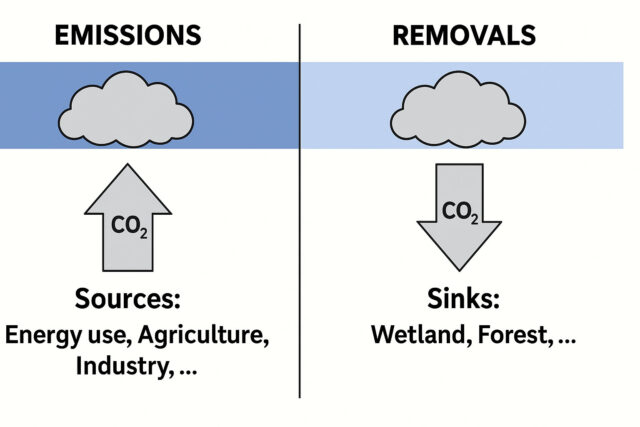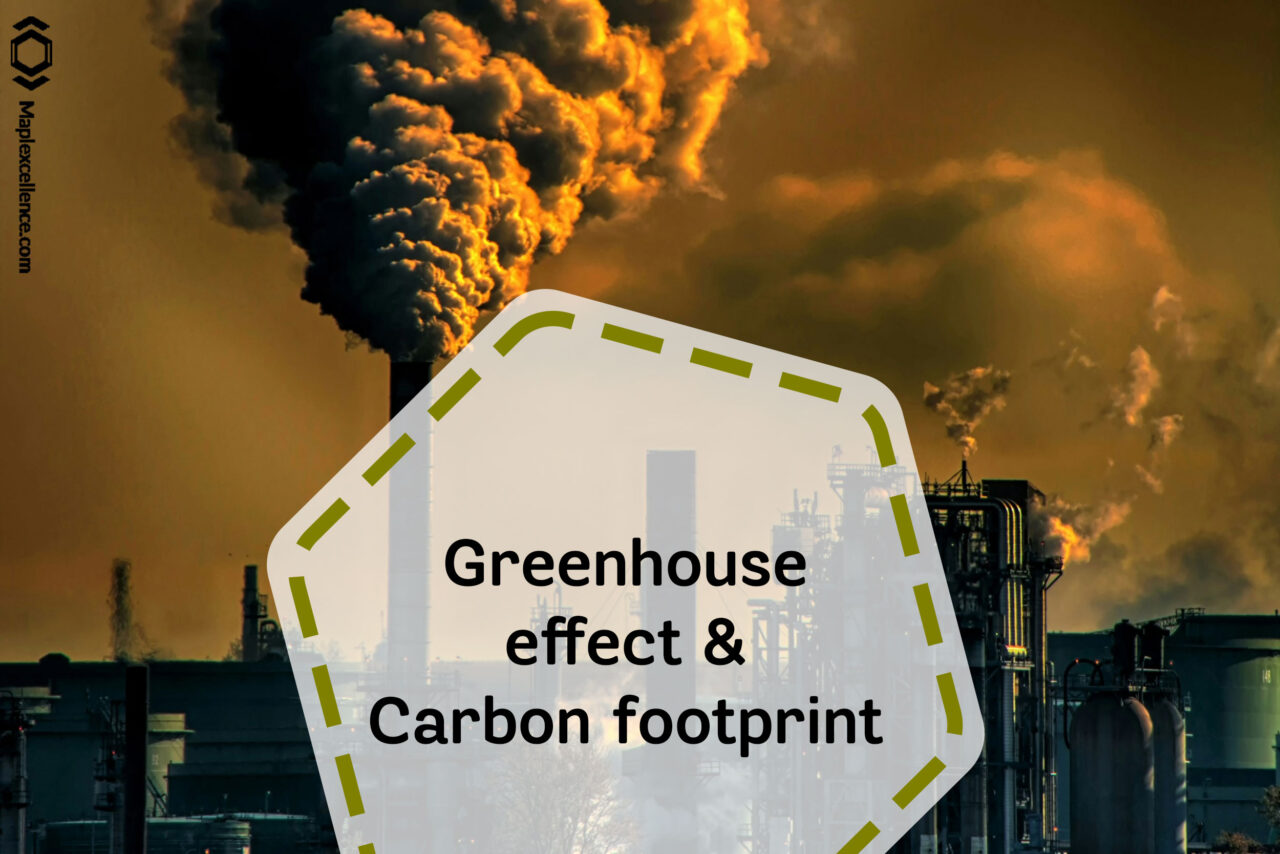The natural volumetric composition of Earth’s atmosphere is predominantly nitrogen (78%), Oxygen (21%), and other “trace” gases in small concentrations. Two of these trace gases, carbon dioxide (CO₂) and methane (CH₄) have the property of absorbing and retaining radiant energy coming from the sun, as well as heat from earth. This characteristic causes energy to be held in the form of heat. This phenomenon is known as the greenhouse effect, and the gases responsible for the phenomenon are named greenhouse gases (GHGs).
Because of their chemical composition, all the different GHGs have a distinct capacity to retain radiant energy. To facilitate comparison among them, carbon dioxide is used as the reference for all, as it is the principal GHG of anthropogenic origin. Emissions of GHGs other than carbon dioxide are converted into the amount of CO₂ that would represent the equivalent radiative forcing (CO₂e).
Building on the concept of CO₂ equivalent, the “carbon footprint” refers to the total amount of greenhouse gases generated by a person, organization, event, or product, expressed in CO₂e. By using CO₂ equivalent as a common unit, the carbon footprint allows us to capture and compare the climate impact of different activities and emissions sources in a standardized way. So A carbon footprint is the total volume of greenhouse gases (GHGs) emitted directly or indirectly by human activities, expressed in CO₂-equivalent (CO₂e) units (IPCC, 2023)
Emissions vs. Removals: Key GHG Concepts
After defining greenhouse gas emissions, it’s important to clarify related terms such as removals, sources, and sinks, which play a key role in understanding the overall carbon cycle.
Sources are specific processes or activities that generate greenhouse gas emissions—for example, transportation, energy production, or livestock farming.
Removals are processes that absorb and store greenhouse gases from the atmosphere – especially carbon dioxide (CO₂)-, such as carbon sequestration by forests, soils, and oceans. Removal helps balance emissions by reducing the concentration of greenhouse gases in the atmosphere.
Sinks are natural or artificial systems that absorb more greenhouse gases than they emit. The most significant greenhouse gas absorbed by sinks is carbon dioxide (CO₂), which is taken by Forests through photosynthesis, sequestered in soil, and dissolved in oceans. While certain soils, and bacteria can also absorb small amounts of methane (CH₄) and nitrous oxide (N₂O), their removal by natural sinks is minimal compared to CO₂. As a result, the term carbon sink is most commonly used to refer to systems that primarily capture and store carbon dioxide.
Greenhouse gas emission and removal estimates are divided into main sectors, which are groupings of related processes, sources, and sinks:
• Energy
• Industrial Processes and Product Use (IPPU)
• Agriculture, Forestry and Other Land Use (AFOLU)
• Waste
• Other (e.g., indirect emissions from nitrogen deposition from non-agriculture sources)
To better understand how greenhouse gas emissions and removals are categorized, it helps to look at how they relate to their sources and sinks. Below is the following Figure 1 illustrates the relationship between emissions, removals, sources, and sinks across key sectors such as energy, agriculture, land use, and industry.

Figure 1. CO₂ emissions from sources such as energy use, agriculture, and industry contrasted with removals by natural sinks like wetlands and forests.
Conclusion
In summary, the greenhouse effect—driven by trace gases like CO₂ and CH₄—underpins the warming of our planet by trapping radiant energy. By converting all greenhouse gases into a common CO₂-equivalent metric, the concept of a carbon footprint allows individuals, organizations, and products to quantify and compare their impact on the climate. Understanding the balance between emissions (from energy use, industry, agriculture, waste, and other sources) and removals (via forests, soils, oceans, and engineered sinks) is essential for effective climate action.
Categorizing emissions into sectors and distinguishing sources from sinks helps pinpoint where interventions are most needed. Whether through reducing fossil-fuel consumption, enhancing natural or technological carbon sinks, or optimizing industrial processes, every reduction in CO₂e contributes to bending the emissions curve downward. As we continue to refine measurement methods and broaden our deployment of low-carbon solutions, the standardized language of “carbon footprint” empowers decision-makers at all levels to track progress, set meaningful targets, and drive the collective effort required to stabilize Earth’s climate.


